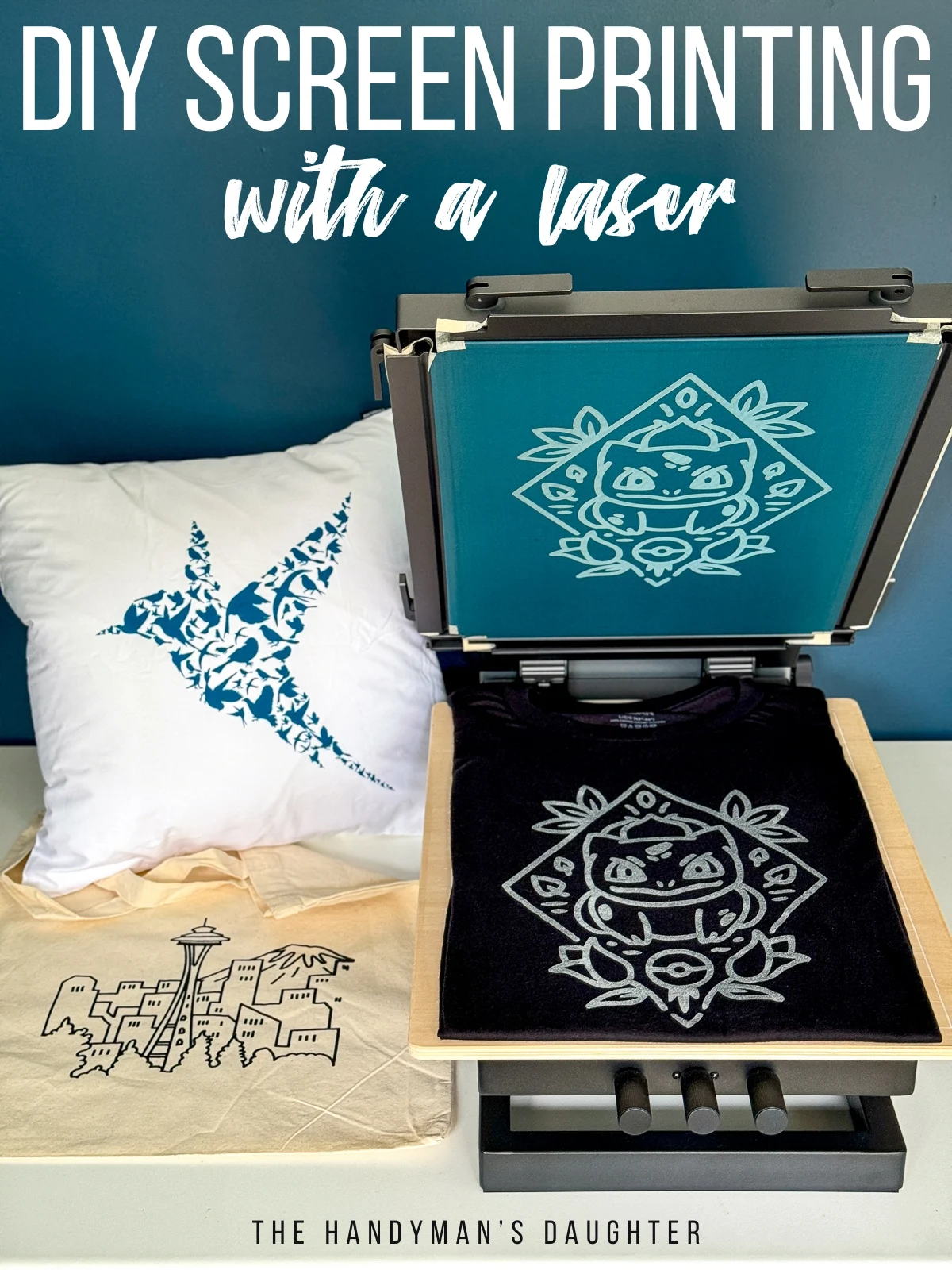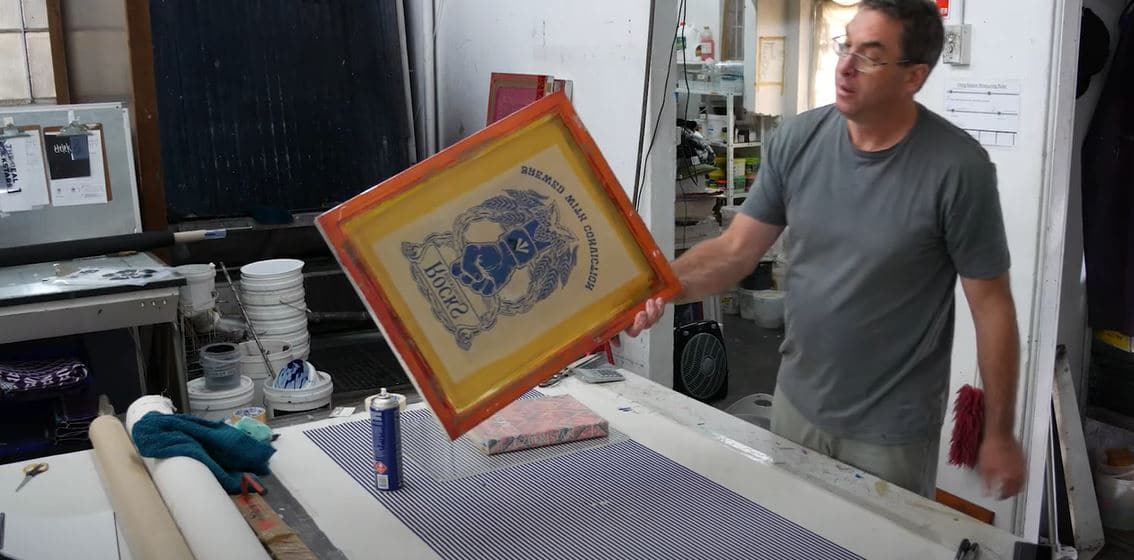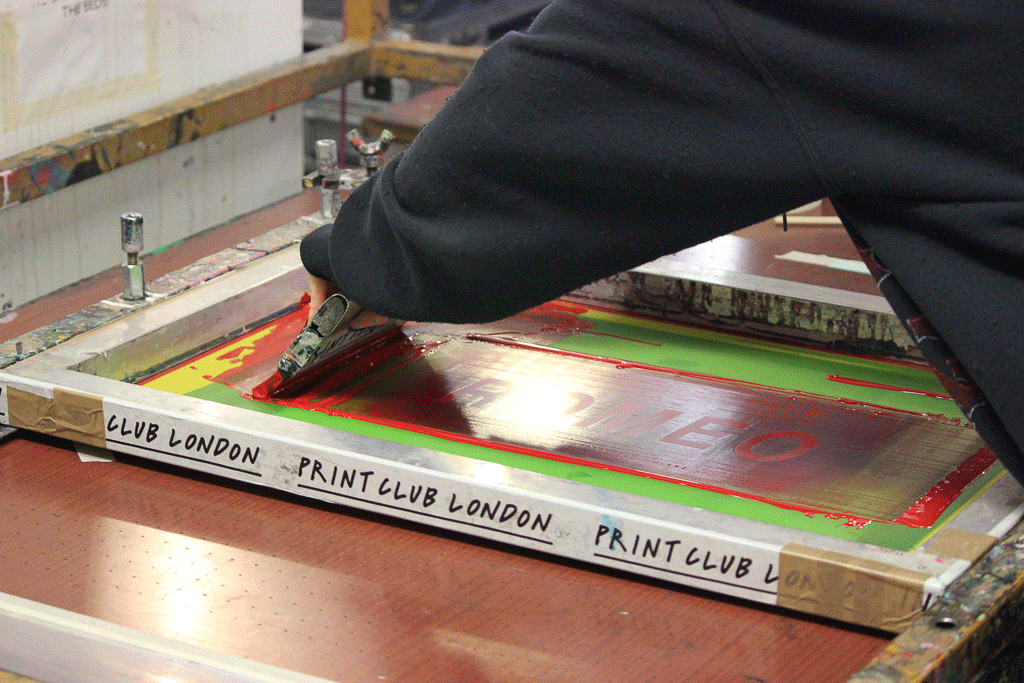ChatGPT said: 10:9 Design Screen Printing Texas: packages explained
Wiki Article
Discover the Numerous Kinds Of Screen Printing Techniques for Your Next Job
Screen printing offers a varied array of techniques that can enhance any innovative project. From conventional techniques like serigraphy to contemporary technologies such as direct-to-garment printing, each technique has its special benefits. Specialty choices, including environmentally friendly and metal inks, present also extra opportunities. Comprehending these techniques can substantially affect the final outcome. The difficulty exists in choosing the most suitable technique for specific demands and preferred impacts. What elements should one consider?
The Basics of Screen Printing
Screen printing may seem facility, it is fundamentally a simple process that entails transferring ink with a mesh screen onto different surfaces. The technique starts with the production of a pattern, which defines the design to be published. This stencil is affixed to a mesh screen, usually made from polyester or nylon. Once the pattern remains in area, ink is used to the screen and pushed with the mesh using a squeegee, leading to the wanted pattern being printed on the underlying product.Screen printing can be performed on a vast array of substrates, consisting of plastic, textile, and paper, making it a versatile selection for various projects. The procedure permits for vibrant colors and elaborate designs, making it prominent in sectors such as art, advertising, and fashion. Understanding these essentials outfits people with the foundational expertise called for to explore more sophisticated strategies in screen printing.
Standard Screen Printing Techniques
Standard screen printing methods have actually been utilized for centuries, protecting the craftsmanship and artistry of this approach. This strategy makes use of a mesh screen to move ink onto a substrate, such as fabric or paper, enabling lasting and lively layouts. The process starts with developing a pattern, which blocks specific areas of the screen to regulate where the ink will be applied.One prominent method is serigraphy, typically utilized for restricted editions and artistic prints. One more is making use of water-based inks, which are environment-friendly and provide a soft feel on fabrics - 10:9 Design Screen Printing. Additionally, typical approaches can include hand-operated printing, where artisans use ink with a squeegee, making certain accuracy and attention to information
These methods stay valued in the market for their tactile high quality and the one-of-a-kind textures they produce, interesting both customers and developers who value the heritage of screen printing.
Digital Screen Printing Innovations
As the demand for faster production and customization in the printing sector has risen, digital screen printing advancements have emerged as a game-changer. This innovation blends conventional screen printing techniques with digital procedures, allowing for rapid prototyping and detailed layouts that were previously tough to attain. One substantial innovation is the introduction of direct-to-garment (DTG) printing, which assists in high-grade, full-color prints on numerous textiles without the requirement for screens. Additionally, innovations in ink formulations have actually led to environmentally friendly alternatives that preserve dynamic shades while lessening ecological effect. The use of automated systems even more improves manufacturing, lowering labor expenses and enhancing accuracy. These developments not just accommodate small batch orders and tailored layouts but also enable quicker turn-around times, making them suitable for services concentrated on conference client demands in a hectic market. Digital screen printing, consequently, represents a crucial evolution in the domain of printing methods.Specialty Screen Printing Methods
Exploring specialized screen printing techniques reveals a diverse range of techniques that press the limits of creative thinking and performance in the printing industry. Amongst these, glow-in-the-dark inks give an one-of-a-kind visual result, making styles come active in low-light conditions. Metal inks, understood for their shimmering coating, add a touch of deluxe to printed materials. An additional innovative technique is discharge printing, which removes dye from the textile as opposed to including ink, causing a soft, vintage feeling. High-density printing creates an elevated texture externally, boosting tactile interaction. In addition, water-based inks are gaining popularity for their lively colors and decreased ecological influence. Each of these specialty techniques accommodates specific style demands, allowing musicians and brands to develop standout products that resonate with their audiences. By leveraging these approaches, services can boost their screen printing jobs to brand-new elevations, making sure memorable impressions.Eco-Friendly Screen Printing Options
Environment-friendly screen printing alternatives are gaining traction as the industry shifts towards sustainability. Sustainable ink options and using eco-friendly products are key components in reducing the ecological effect of the printing process. By embracing these techniques, screen printers can contribute to an extra lasting future while keeping top notch outcomes.Sustainable Ink Options

Biodegradable Materials Usage
As the screen printing market progresses, the unification of eco-friendly products is becoming increasingly important for environmentally conscious practices. Producers and designers are now exploring inks and substratums made from all-natural, sustainable sources that decay much more efficiently than traditional equivalents. These eco-friendly alternatives reduce plastic waste and lessen ecological influence, lining up with the growing need for lasting products.
Typical examples include water-based inks and natural cotton fabrics, both of which lessen unsafe chemicals and promote eco-friendliness. Brand names that take on these materials typically improve their market charm, drawing in customers who prioritize sustainability. As understanding of ecological problems remains to climb, the shift towards biodegradable products in screen printing is most likely to get momentum, promoting a greener market requirement.
Selecting the Right Method for Your Job
Exactly how can one figure out one of the most ideal screen printing strategy for a specific project? The decision rests on a number of elements, including the product to be published on, the intricacy of the style, and the desired production volume - 10:9 Design LLC Company. As an example, direct-to-garment printing is ideal for intricate styles with numerous shades, while traditional screen printing succeeds for bigger runs of easier graphics
Additionally, consideration of the end-use of the published thing is vital. For exterior applications, strategies that offer sturdiness and climate resistance, such as plastisol ink, may be chosen. Alternatively, environmentally-conscious projects may take advantage of water-based inks or eco-friendly products.
Eventually, understanding the job's distinct needs permits an informed selection, ensuring both aesthetic appeal and here functional longevity. By assessing style intricacy, material compatibility, and production range, one can effectively pick the most ideal screen printing technique to meet their job's objectives.
Regularly Asked Questions
What Is the Background of Screen Printing?
Screen printing came from old China around 1000 AD, progressing with Japan and Europe. By the 20th century, it ended up being preferred in industrial art and fashion, revolutionizing exactly how designs were created and dispersed internationally.
Just how Do I Prepare Artwork for Screen Printing?
To prepare art work for screen printing, one must ensure high resolution, utilize a suitable shade mode, develop different layers for each color, and transform message to lays out, assuring compatibility with the printing process and wanted outcome.What Products Are Best for Screen Printing?
The most effective products for screen printing include top quality inks, sturdy displays, and ideal substratums like cotton, polyester, or blends. Furthermore, making use of ideal emulsion and squeegees can improve the printing process and outcomes.Can I Evaluate Print in the house?
Yes, screen printing in the house is possible. With the right products, arrangement, and strategies, people can create high-quality prints. However, careful factor to consider of workspace and equipment is necessary for effective outcomes.
What Are Usual Mistakes in Screen Printing?
Usual mistakes in screen printing consist of incorrect exposure times, poor ink consistency, imbalance of screens, not enough cleaning of products, and disregarding to examine prints. These errors can compromise the top quality and precision of the end product.Screen printing may appear complex, it is fundamentally an uncomplicated procedure that includes moving ink with a mesh screen onto different surface areas. As the demand for faster production and customization in the printing sector has risen, digital screen printing technologies have emerged as a game-changer. Checking out specialized screen printing techniques discloses a diverse array of techniques that press the boundaries of creative thinking and performance in the printing sector. The finest materials for screen printing include high-quality inks, resilient displays, and suitable substrates like cotton, polyester, or blends (10:9 Design near me). Usual mistakes in screen printing include improper exposure times, insufficient ink consistency, misalignment of screens, inadequate cleaning of materials, and ignoring to check prints
Report this wiki page